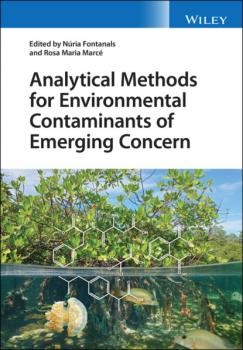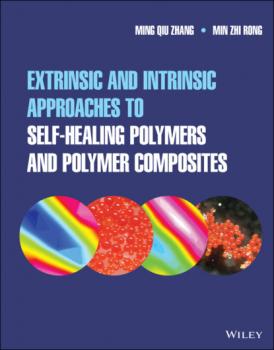Химия
Различные книги в жанре ХимияMagnetic Resonance Microscopy
Magnetic Resonance Microscopy Explore the interdisciplinary applications of magnetic resonance microscopy in this one-of-a-kind resource In Magnetic Resonance Microscopy: Instrumentation and Applications in Engineering, Life Science and Energy Research, a team of distinguished researchers delivers a comprehensive exploration of the use of magnetic resonance microscopy (MRM) and similar techniques in an interdisciplinary milieux. Opening with a section on hardware and methodology, the book moves on to consider developments in the field of mobile nuclear magnetic resonance. Essential processes, including filtration, multi-phase flow and transport, and a wide range of systems – from biomarkers via single cells to plants and biofilms – are discussed next. After a fulsome treatment of MRM in the field of energy research, the editors conclude the book with a chapter extoling the virtues of a holistic treatment of theory and application in MRM. Magnetic Resonance Microscopy: Instrumentation and Applications in Engineering, Life Science and Energy Research also includes: A thorough introduction to recent developments in magnetic resonance microscopy hardware and methods, including ceramic coils for MR microscopy Comprehensive explorations of applications in chemical engineering, including ultra-fast MR techniques to image multi-phase flow in pipes and reactors Practical discussions of applications in the life sciences, including MRI of single cells labelled with super paramagnetic iron oxide nanoparticles In-depth examinations of new applications in energy research, including spectroscopic imaging of devices for electrochemical storage Perfect for practicing scientists from all fields, Magnetic Resonance Microscopy: Instrumentation and Applications in Engineering, Life Science and Energy Research is an ideal resource for anyone seeking a one-stop guide to magnetic resonance microscopy for engineers, life scientists, and energy researchers.
Analytical Methods for Environmental Contaminants of Emerging Concern
Analytical Methods for Environmental Contaminants of Emerging Concern Provides the analytical methodology required to detect different families of organic compounds of emerging concern (CECs) from environmental samples Most contaminants of emerging concern (CECs) —such as pharmaceuticals, personal care products, pesticides, sunscreens, perfluorinated compounds, and microplastics—have been present in the environment for years, yet some have only recently been identified, and many of these organic compounds remain unregulated. Analytical methods have been developed to determine the toxicity and risk of different families of CECs. Analytical Methods for Environmental Contaminants of Emerging Concern presents the methods currently available to determine families of organic CECs in environmental samples. Each section of the book is devoted to a particular family of CECs, covering different analytical methods supported by examples of both cutting-edge research and commonly used methods. An international panel of experts describes every step of the analytical procedures, including sample preparation, chromatographic separation coupled to mass spectrometry or other instrumental techniques. Specific requirements are linked to the properties of the contaminants and the sample matrix for each procedure presented. Throughout the book, in-depth case studies of analytical procedures for CEC extraction, separation, and determination are presented to help readers transfer the analytical methods to their laboratories. Provides detailed descriptions of various approaches for determining each group of CECs in environmental samples Covers different types of aqueous, solid, and atmospheric samples Includes up-to-date information on CEC properties, relevant legislation, reported or potential metabolites/transformation products, and environmental occurrence Addresses CECs such as novel psychoactive substances, artificial sweeteners, musk fragrances, disinfection byproducts, and microplastics Offers practical tips and advice on special care procedures to assist readers in CEC determination Analytical Methods for Environmental Contaminants of Emerging Concern is an essential reference and guide for advanced students and researchers in analytical chemistry and science, environmental science, forensic science, and specialized subjects related to analytical chemistry.
Сборник статей по организации водно-химического режима теплоэнергообъектов
Сборник включает в себя ряд статей на тему организации водно-химического режима паровых котельных установок. Информация не разбивает ВХР на отдельные части, а позволяет взглянуть на него в целом, как на комплекс взаимосвязанных физико-химических процессов, что помогает понять его на более качественном уровне.Благодаря простому языку заявленная тема доступна для усвоения даже тем, кто с ней не знаком или имеет поверхностное представление. Для опытных же читателей она станет полезным дополнением.
Damaging Effects of Weapons and Ammunition
Comprehensive coverage of weapon damage effects on a variety of objects Damaging Effects of Weapons and Ammunition delivers a thorough exploration of a range of issues related to the effects of ammunition and weapons. The book includes coverage of the basic concepts of the theory of efficiency and the physical foundations of the functional and damaging effects of fragments, shaped charges, high-explosive and penetrating weapons. The author discusses the calculation formulas used to evaluation the parameters of damage fields and their interaction with various objects. Additionally, the book expands on the damage criteria of weapons, the characteristics of the vulnerability of objects with respect to a variety of damaging factors, dependencies for assessing safe distances, and the resistance of various structures to the effects of explosion and impact. Damaging Effects of Weapons and Ammunition also offers: Detailed calculation methods indicating areas of application and the necessary units of used quantities Extensive examples of classic designs of ammunition from around the world Discussions of the characterization of various types of ammunition, including high-explosive, fragment, penetrative, and shaped charges A chapter on the numerical simulation of high-speed processes Perfect for technical specialists working in the fields of explosion safety and explosives, Damaging Effects of Weapons and Ammunition also belongs in the libraries of researchers and students studying explosion phenomena, explosive technologies, explosion safety, and materials science.
Extrinsic and Intrinsic Approaches to Self-Healing Polymers and Polymer Composites
Explore the cutting-edge in self-healing polymers and composites In Extrinsic and Intrinsic Approaches to Self-Healing Polymers and Polymer Composites, a pair of distinguished materials scientists delivers an insightful and up-to-date exploration of the fundamentals, theory, design, fabrication, characterization, and application of self-healing polymers and polymer composites. The book discusses how to prepare self-healing polymeric materials, how to increase the speed of crack repair, high temperature applications, and how to broaden the spectrum of healing agent species. The authors emphasize the integration of existing techniques with novel synthetic approaches for target-oriented materials design and fabrication. They provide a comprehensive view of this emerging field, allowing new researchers to gather a firm understanding of the framework for creating new materials or applications. Additionally, the book includes: A thorough introduction to the field of self-healing polymers and polymer composites, including the advances made by various laboratories and the challenges, trends, and future directions that characterize modern research in the area Comprehensive explorations of the self-healing strategies proposed by the authors, including addition polymerization, systems-based microcapsules and plastic tubes, and more Practical discussions of the application of reversible S-S bonds in self-healing polymers In-depth examinations of intrinsic self-healing via reversible C-ON bonds Perfect for polymer and materials scientists, chemists, and engineers, Extrinsic and Intrinsic Approaches to Self-Healing Polymers and Polymer Composites will also earn a place in the libraries of professionals working in the polymer, coatings, paints, medical, defense, and pharmaceutical industries.









